The earth hosts over 300,000 plant species, so it’s safe to expect that there are some particularly strange and unique plant species amongst them. Most of us are familiar with the usual flowers such as roses, tulips, and common orchids, but did you know there are orchids that look like a monkey’s face, or even flying ducks and dancing girls? Have you ever come across a plant that can consume a mouse? Or plants that emit odors resembling cadaver and feces? The depth and breadth of the plant kingdom is truly astonishing with countless wonderful plant species that you may well not be aware of yet. We conducted some research on this intriguing subject and put together a feature list of 25 Of The Most Bizarre And Unique Plants You Have Ever Seen. From peculiarly formed orchids and ‘living stones’ plants to the ‘skeleton flower’, ‘Darth Vader flower’ and the sinister pitcher plants that can devour small creatures, here are 25 Of The Most Bizarre And Unique Plants You Have Ever Seen.
If you liked these bizarre and unique plants, then you may also enjoy these 25 awesome looking Bonsai designs.
Crab´s eye
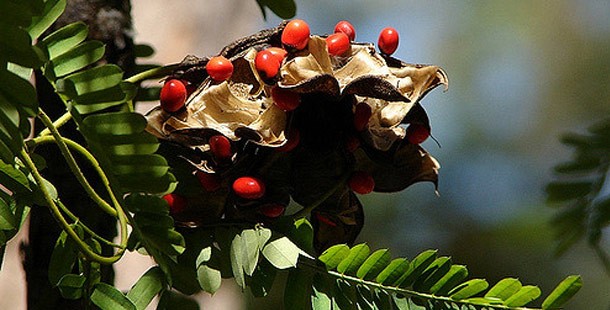 Source: en.wikipedia.org, image by Tatters
Source: en.wikipedia.org, image by Tatters Known by a number of other colloquial names such as jequirity, rosary pea, John Crow Bead and Indian licorice, crab´s eye is a slender, perennial climber that twines around trees, shrubs, and hedges. Native to almost all tropics, the plant is best known for its seeds, which are used as beads and in percussion instruments, and which are toxic due to the presence of Abrin.
Lithops karasmontana
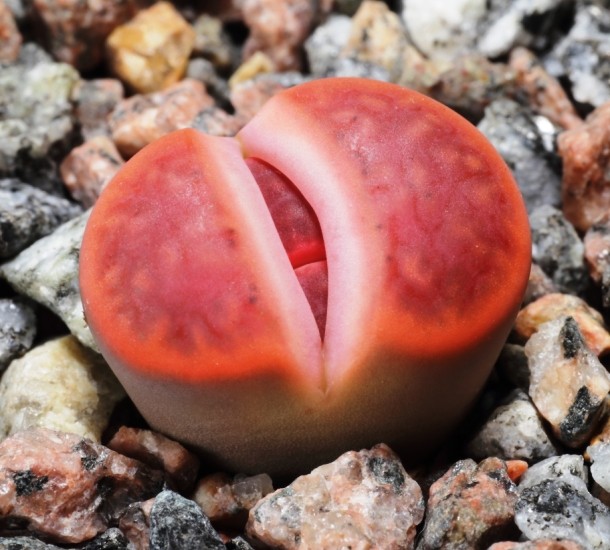 Source and image: en.wikipedia.org
Source and image: en.wikipedia.org Lithops karasmontana (translated as Karas Mountains living stone) is a species of flowering plant in the family Aizoaceae, native to Namibia and South Africa. This uniquely-looking plant resists attacks from herbivorous predators by mimicking local stone formations. When not in bloom, Lithops karasmontana is almost impossible to detect.
White Egret flower
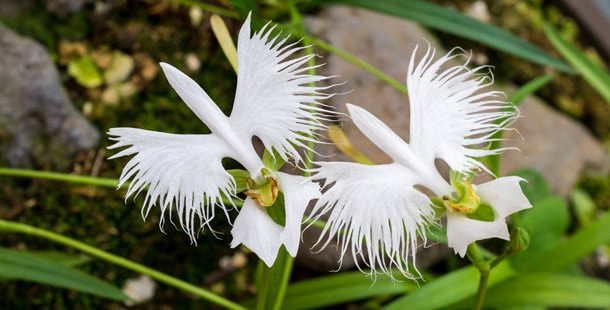 Source: en.wikipedia.org,
Source: en.wikipedia.org, Also known as Fringed Orchid or Sagiso, the White Egret flower is a species of orchid found in China, Japan, Korea and Russia. Resembling a white dove, the plant should not be confused with the white fringed orchid Platanthera praeclara, which is a North American species.
Corpse flower
 Source: en.wikipedia.org, image: commons.wikimedia.org
Source: en.wikipedia.org, image: commons.wikimedia.org Endemic to the rainforests of Sumatra and possibly Borneo, the corpse flower is noted for producing the largest individual flower on Earth (measuring over 3 ft or 1 meter in diameter). Scientifically known as Rafflesia arnoldii, the plant produces a very strong odor of decaying flesh, thus the nickname.
Dracula benedictii
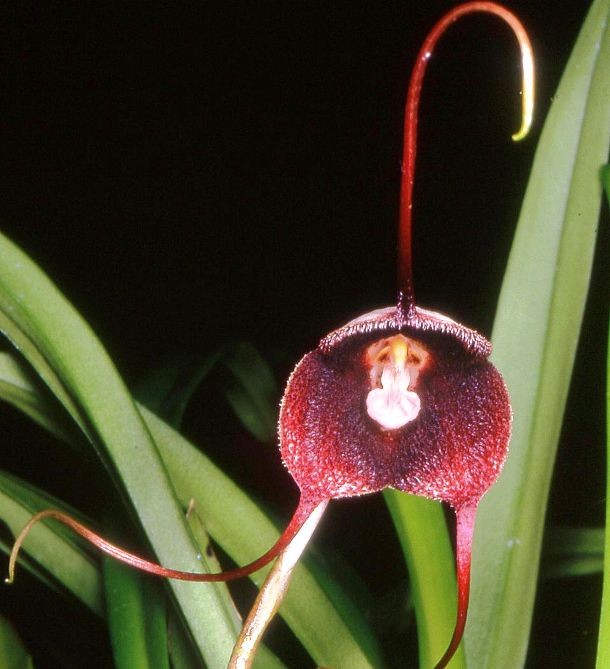 Source: en.wikipedia.org, image: commons.wikimedia.org
Source: en.wikipedia.org, image: commons.wikimedia.org Dracula benedictii is a species of rare orchid found in Cordillera Central and Cordillera Occidental, Colombia. Resembling a monkey´s face, this orchid species was named in honor of Benedict Roezl, the noted Bohemian collector, who discovered this plant.
Nepenthes distillatoria
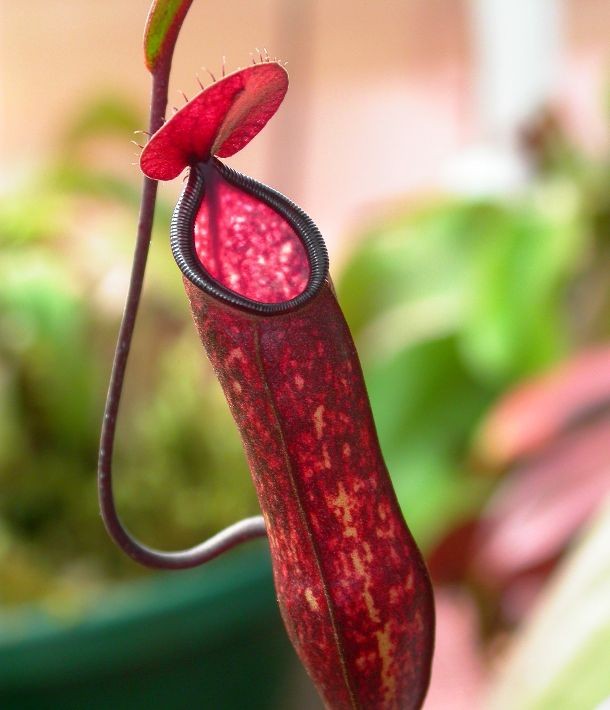 Source and image: en.wikipedia.org
Source and image: en.wikipedia.org A tropical pitcher plant endemic to Sri Lanka, Nepenthes distillatoria is famous for its leaves that have modified as pitfall traps — a prey-trapping mechanism featuring a deep cavity filled with digestive fluid liquid. The plant´s diet usually consists of insects but there have been some cases recorded when the plant ate a frog and even a mouse.
Hooker´s lips
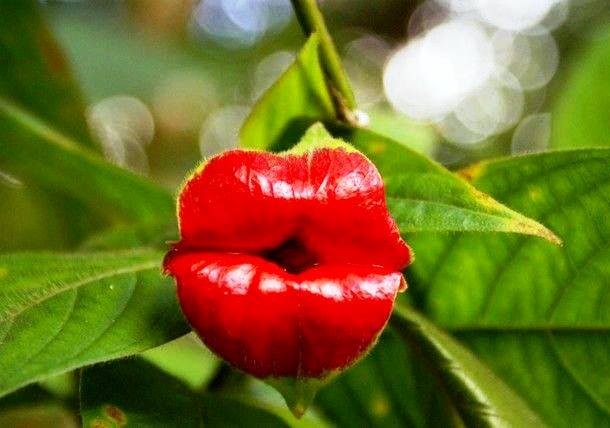 Source: en.wikipedia.org, Image: www.facebook.com/aneta.greenrehab
Source: en.wikipedia.org, Image: www.facebook.com/aneta.greenrehab Scientifically known as Psychotria Elata, the Hooker´s lips is a species of flowering plants in the Rubiaceae family. Found in the rain forests of some Central and South American countries, the plant has apparently evolved into its current shape to attract pollinators including hummingbirds and butterflies.
Baseball plant
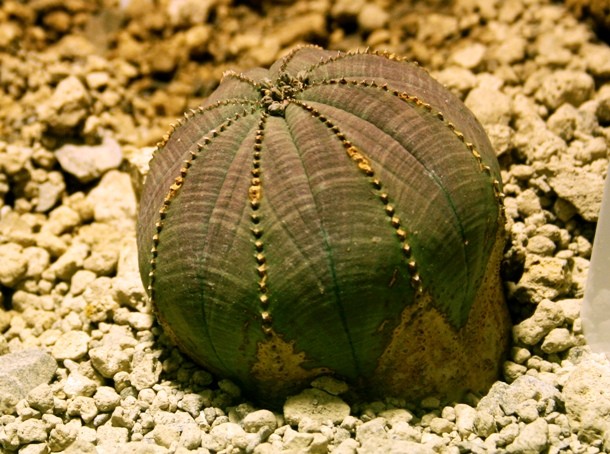 Source and image: en.wikipedia.org
Source and image: en.wikipedia.org Native to South Africa (particularly to the Cape Province), the baseball plant is a sub-tropical succulent notable for its bizarre shape, strikingly resembling a baseball. In the wild, the plant is endangered because of over-collection and poaching and also due to its slow growth.
Ballerina orchid
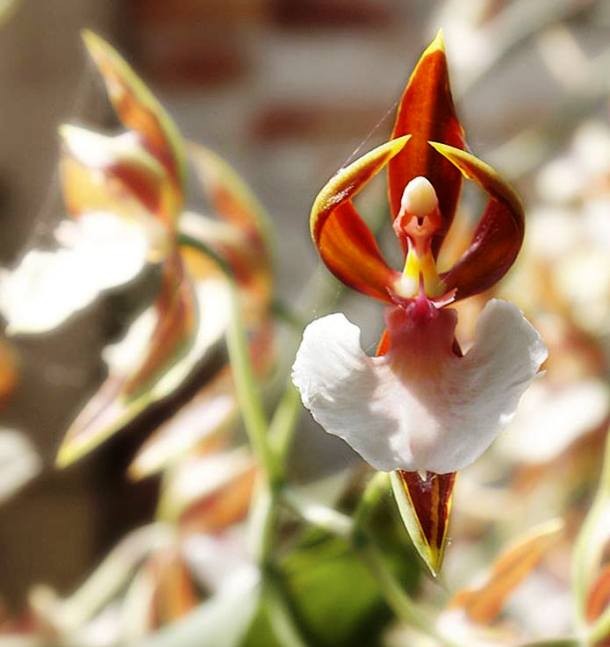 Source: www.environment.gov.au, image: www.facebook.com/aneta.greenrehab
Source: www.environment.gov.au, image: www.facebook.com/aneta.greenrehab The Ballerina orchid is a small, inconspicuous, terrestrial spider orchid that grows singly or in groups. Found in a very small region in south-western Australia, this orchid species is classified as critically endangered. Although they can live for many years, these plants only flower for about two weeks.
Hydnora Africana
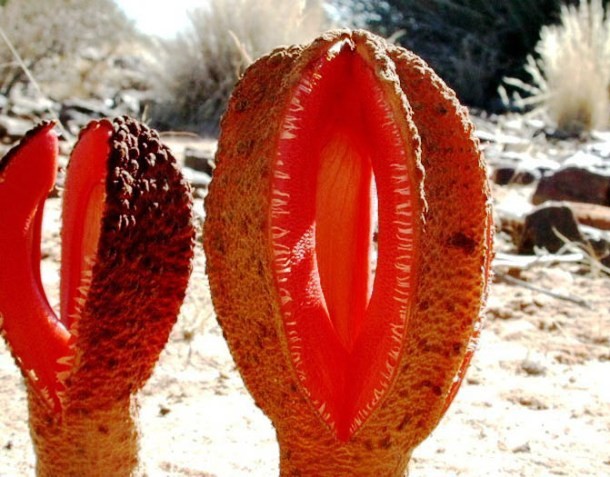 Source and image: en.wikipedia.org
Source and image: en.wikipedia.org Hydnora Africana is an achlorophyllous plant native to southern Africa that is parasitic on the roots of members of the Euphorbiaceae family. The plant grows underground, except for a fleshy flower that emerges above ground and emits a terrible odor of feces to attract its natural pollinators, dung beetles, and carrion beetles.
Darth Vader flower
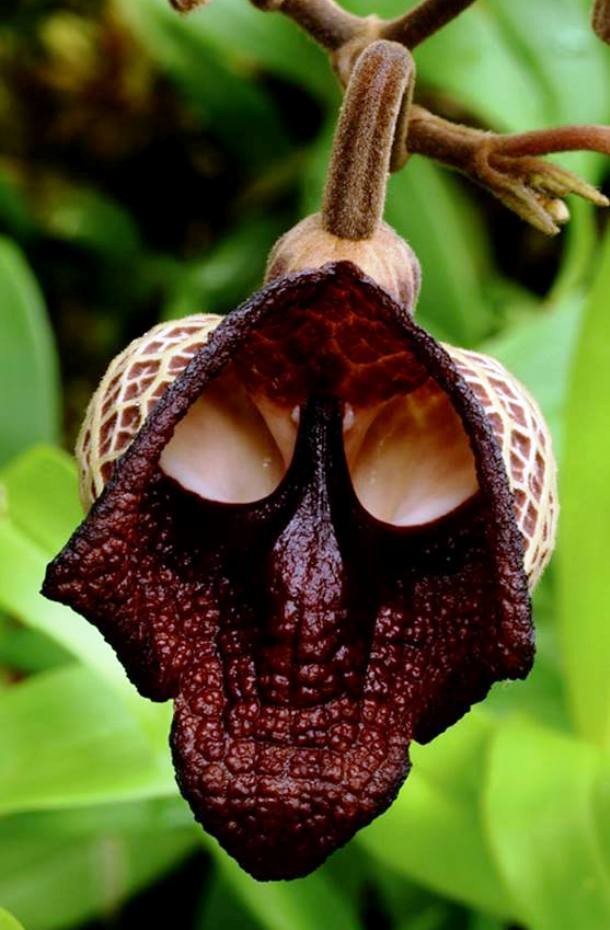 Source: en.wikipedia.org, image: www.facebook.com/aneta.greenrehab
Source: en.wikipedia.org, image: www.facebook.com/aneta.greenrehab Scientifically known as Aristolochia Salvadorensis, the Darth Vader flower is a plant species of Aristolochia, a large plant genus with over 500 species. Reaching the height of over 1 ft (30 cm), the plant mainly grows as an annual plant, which means it typically only grows best for a single growing season.
Fiddlehead fern
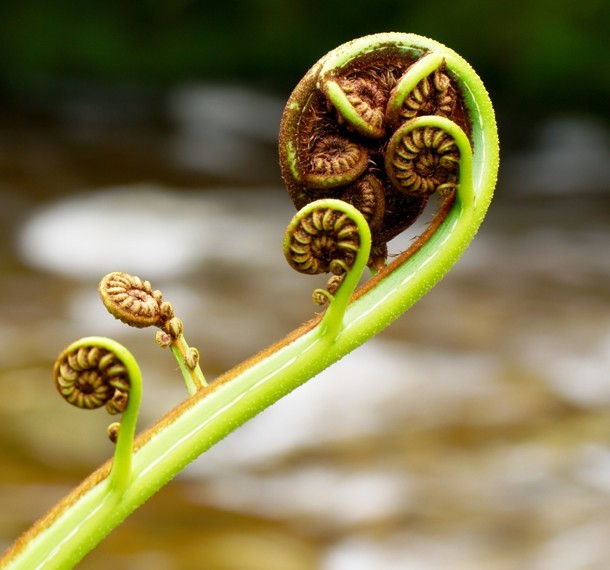 Source and image: en.wikipedia.org
Source and image: en.wikipedia.org Colloquially called fiddleheads or fiddlehead greens, the fiddlehead fern are the furled fronds of a young fern harvested for use as a vegetable. Fiddleheads have antioxidant activity, are a source of omega-3 and omega-6 fatty acids, and are high in iron and fibers.
Black bat flower
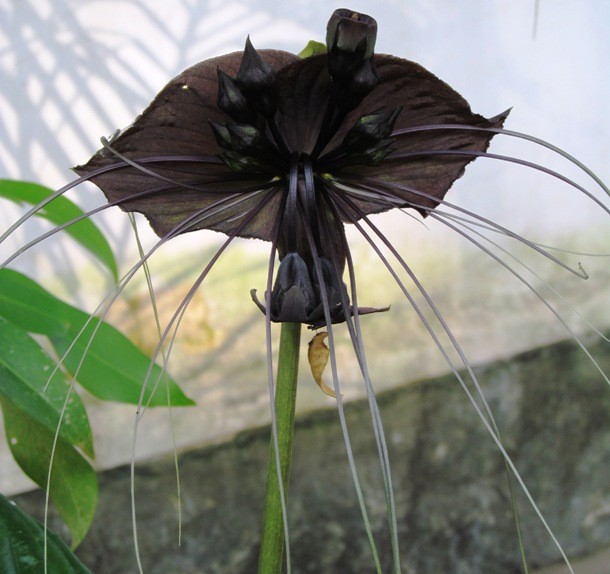 Source: en.wikipedia.org, image: commons.wikimedia.org
Source: en.wikipedia.org, image: commons.wikimedia.org Native to tropical regions of Southeast Asia including Thailand, Malaysia, and southern China, the black bat flower is a species of flowering plant in the yam family Dioscoreaceae. This understory plant is especially notable for its unusual black flowers that are somewhat bat-shaped.
Ceropegia haygarthii
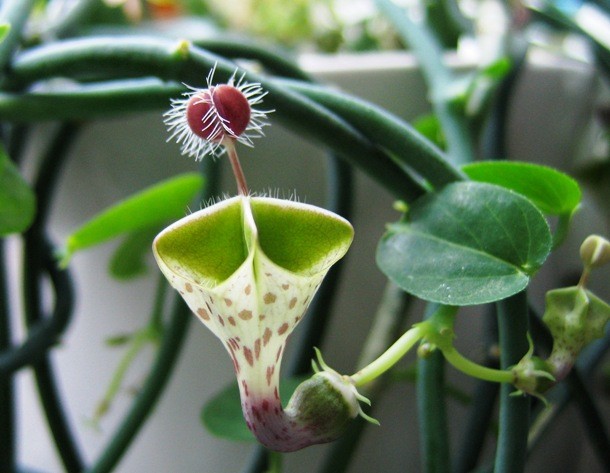 Source: en.wikipedia.org, image: commons.wikimedia.org
Source: en.wikipedia.org, image: commons.wikimedia.org Ceropegia haygarthii is a vigorous, twining vine with small, cream and reddish brown flowers with a very unusual, distinctive shape. A species within the family Apocynaceae (meaning “wax fountain”), the plant can be found in Angola, South Africa, and Mozambique.
Impatiens Bequaertii
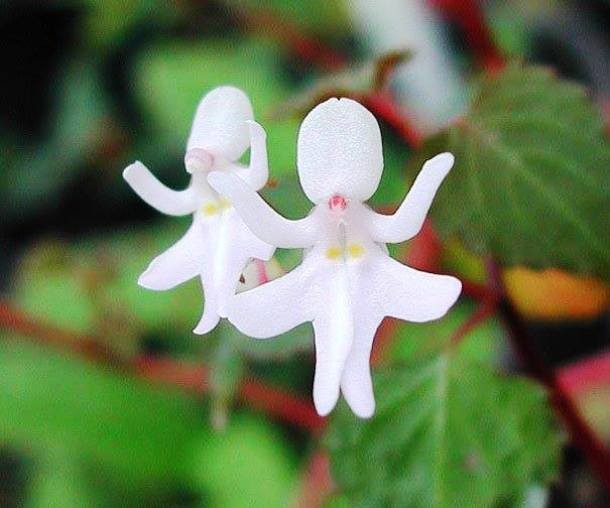 Source: en.wikipedia.org, image: www.facebook.com/aneta.greenrehab
Source: en.wikipedia.org, image: www.facebook.com/aneta.greenrehab What looks like two dancing girls are actually the flowers of the extremely rare Impatiens Bequaertii, one of about 1,000 species of the genus Impatiens, flowering plants widely distributed throughout the Northern Hemisphere and the tropics.
Swaddled babies orchid
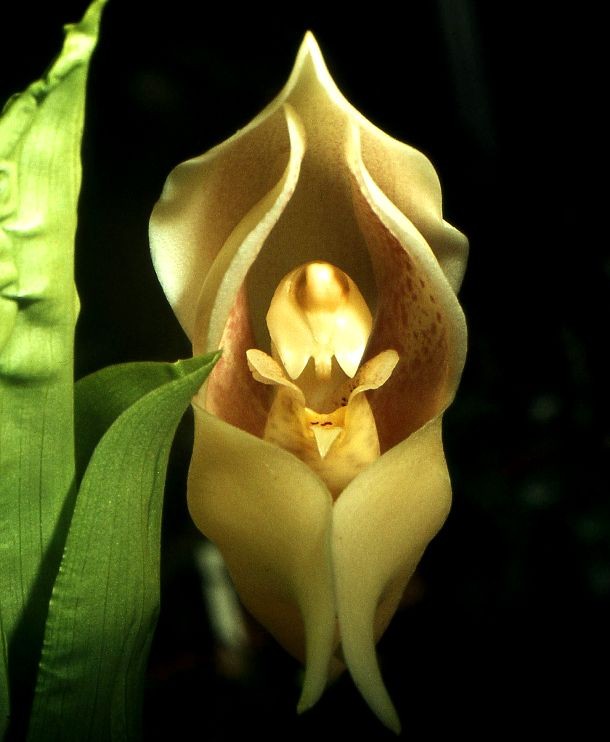 Source: es.wikipedia.org, image: commons.wikimedia.org
Source: es.wikipedia.org, image: commons.wikimedia.org Officially known as Anguola uniflora, the swaddled babies orchid is a little tulip orchid native to South America where it can be found at elevations of 1,400 – 2,500 meters (4,600 – 8,200 feet). The orchid is famous for its large, swaddled babies-like flowers that produce overwhelming fragrance.
Skull flower
 Source: en.wikipedia.org, image: www.facebook.com/aneta.greenrehab
Source: en.wikipedia.org, image: www.facebook.com/aneta.greenrehab Commonly also known as dragon flower or snapdragon, the skull flower (Antirrhinum in Latin) is a climbing plant native to rocky areas of Europe, the United States, and North Africa. Feared for its bizarre, skull-like appearance, the plant was once thought to possess mystical powers.
Moth orchid
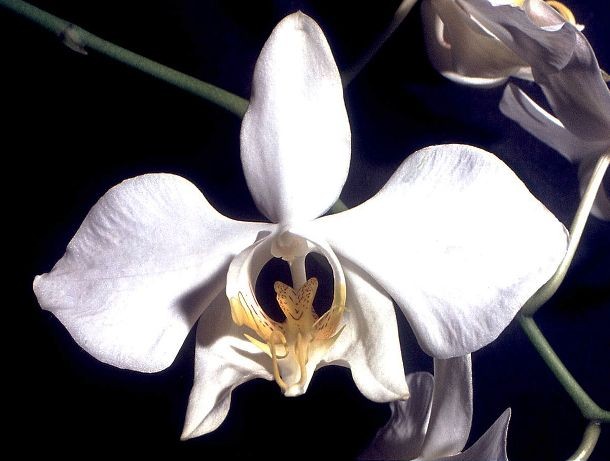 Source and image: en.wikipedia.org
Source and image: en.wikipedia.org First discovered on a small island off the east coast of New Guinea in 1653, the moth orchid has a uniform structure that makes the identification easy. Nowadays, this orchid species is usually found in the eastern to southeastern regions of Asia.
Darwin´s slipper
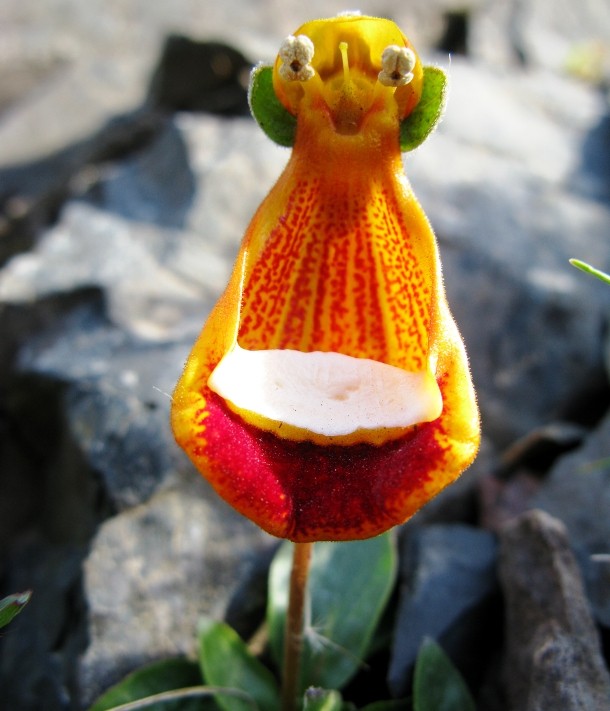 Source: en.wikipedia.org, image: commons.wikimedia.org
Source: en.wikipedia.org, image: commons.wikimedia.org Scientifically known as Calceolaria Uniflora, the Darwin’s slipper is a perennial plant of the genus Calceolaria, known as the slipperworts. Originated from Tierra del Fuego in the southern part of South America, it is a mountain plant growing only to 10 cm (4 in) tall. The flowers are a compound of yellow, white and brownish red.
Nepenthes rajah
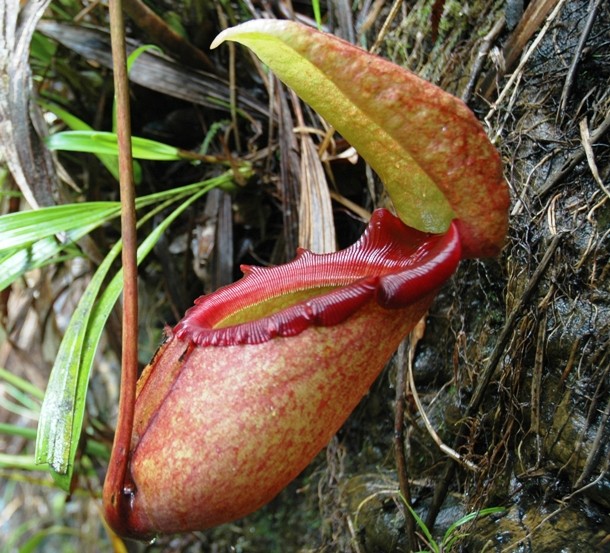 Source: en.wikipedia.org, image: commons.wikimedia.org
Source: en.wikipedia.org, image: commons.wikimedia.org Endemic to certain parts of Borneo, Nepenthes rajah is an insectivorous pitcher plant of the Nepenthaceae family. It grows exclusively on serpentine substrates, particularly in areas of seeping ground water where the soil is loose and permanently moist. Due to its very confined and localized distribution, the plant is classified as an endangered species.
Jade vine
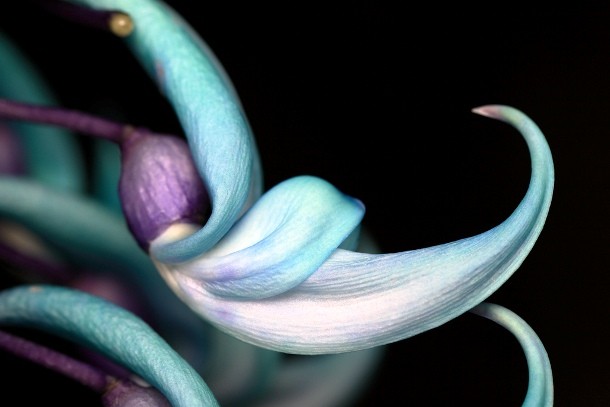 Source: en.wikipedia.org, image: flickr.com
Source: en.wikipedia.org, image: flickr.com Also known as the emerald vine, the jade vine is a species of leguminous perennial woody vine native of the tropical forests of the Philippines. A close relative to regular beans, the plant has very long stems that can reach up to 18 meters (60 feet) in length.
Skeleton flower
 Source: en.wikipedia.org, image: www.facebook.com/aneta.greenrehab
Source: en.wikipedia.org, image: www.facebook.com/aneta.greenrehab One of the species in the Berberidaceae family, the skeleton flower (scientifically known as Diphylleia grayi) is a little herb notable for its white petals that turn transparent with rain. When dry, they revert to white again.
Flying duck orchid
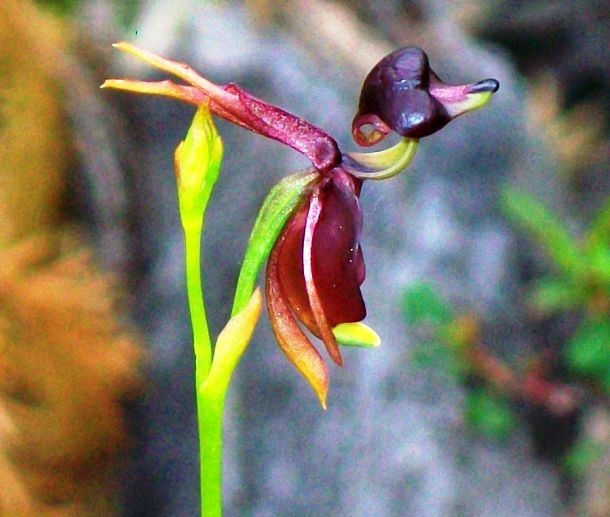 Source and image: en.wikipedia.org
Source and image: en.wikipedia.org The flying duck orchid is a small orchid found in eastern and southern Australia. This terrestrial plant features a remarkable flower, resembling a duck in flight. The flower is an attractant to insects, such as male sawflies which pollinate the flower in a process known as pseudocopulation.
Maypop
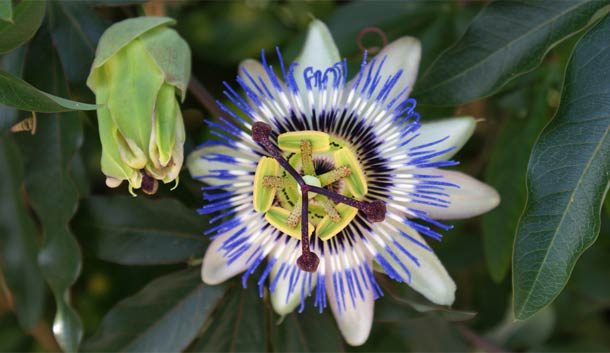 Source: en.wikipedia.org Image: Shutterstock
Source: en.wikipedia.org Image: Shutterstock Commonly also called purple passion flower, wild apricot or wild passion vine, maypop is a fast-growing perennial vine with climbing or trailing stems. A member of the passionflower genus Passiflora, the maypop has large, intricate flowers with prominent styles and stamens. One of the hardiest species of passionflower, it is a common wildflower in the southern US.
Starfish flower
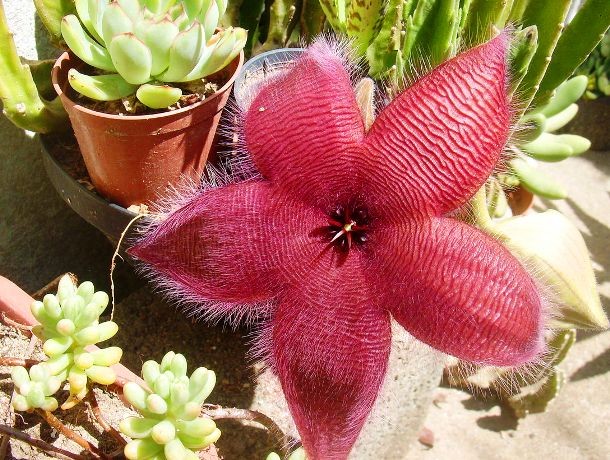 Source: en.wikipedia.org, image: commons.wikimedia.org
Source: en.wikipedia.org, image: commons.wikimedia.org One of the so called carrion plants, the starfish flower is a bizarrely-looking flowering plant that emits repugnant smell of dead flesh. Despite this characteristic, the plant is very popular among gardeners and collectors who value it for its unusual appearance and vivid color.



























